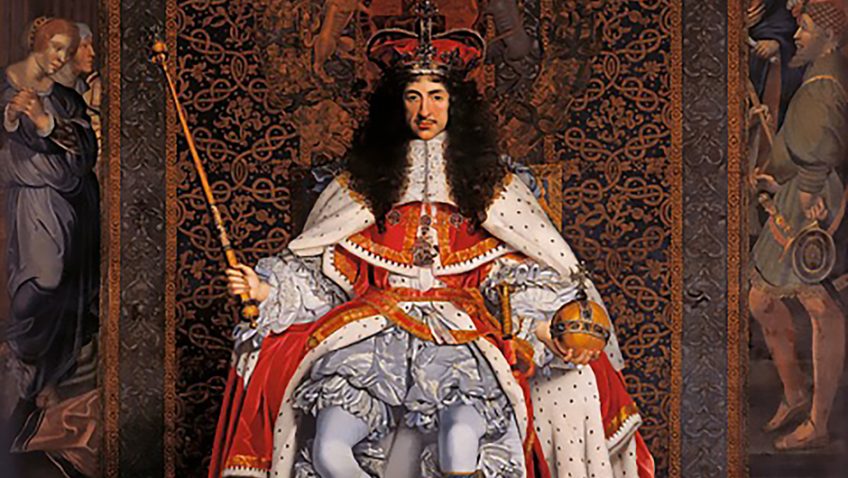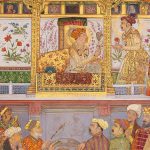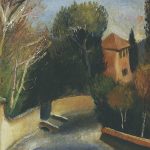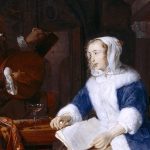The exhibition Charles II: Art & Power, at The Queen’s Gallery, Buckingham Palace, explores the colourful reign of Charles II, who came to the thrones of England and Ireland in 1660 after over ten years of Commonwealth rule.
This exhibition begins with a number of works that record the famous episodes in the King’s escape to Europe after Oliver Cromwell’s victory at the Battle of Worcester on 3 September 1651.
After the final, decisive, engagement of the English Civil War, Charles fled to Boscobel House in Shropshire. The King recalled how Colonel William Careless, an attending Royalist officer, advised him that it was too dangerous to take refuge in the house or nearby woods. There was only ‘one way how to pass the next day, and that was, to get up into a great oak‘. The King later told Samuel Pepys that a Parliamentarian soldier had passed directly beneath the tree while he was concealed within its branches. This celebrated event can be seen recorded on an English faience charger (a decorative plate) from 1680, a typical example of a royal souvenir of the day.
After his successful concealment, Charles began his journey to France. On the way he lodged at Bentley Hall, the home of Colonel Lane, a Royalist officer. With the help of Lane’s sister, Jane, he travelled to Dorset disguised as a servant. This was a brave thing for Jane to do as a reward of £1,000 was offered for Charles’ capture, and anyone caught assisting the King risked execution for treason. In recognition of her bravery and resourcefulness, Charles subsequently presented Jane with a rock crystal and silver-gilt fob watch by Henry Grendon, a well-known watchmaker.
Upon reaching the south coast of England, he paid £60 to the captain of the coal brig, Surprise, to take him from Shoreham to Fécamp in Normandy. He later purchased the vessel, converted her into a yacht and re-named her Royal Escape. The 1685 painting ‘Royal Escape in a Breeze’ by Willem van de Velde the Younger, is thought to have been commissioned by Charles himself.
Reunited with his mother, Henrietta Maria, in France, Charles spent much of the 1650s moving around Europe to form alliances that would help him retake the British thrones. The story of Charles’ escape from England became part of the King’s personal mythology and was recounted throughout his reign as evidence of his ingenuity, bravery and divine protection. This exhibition explores Charles’ triumphant return to London on 29th May, 1660 and how he established his authority.
Charles II: Art & Power is on at The Queen’s Gallery, Buckingham Palace until 13 May 2018. For more information and to book tickets, please go to: www.royalcollection.org.uk.




